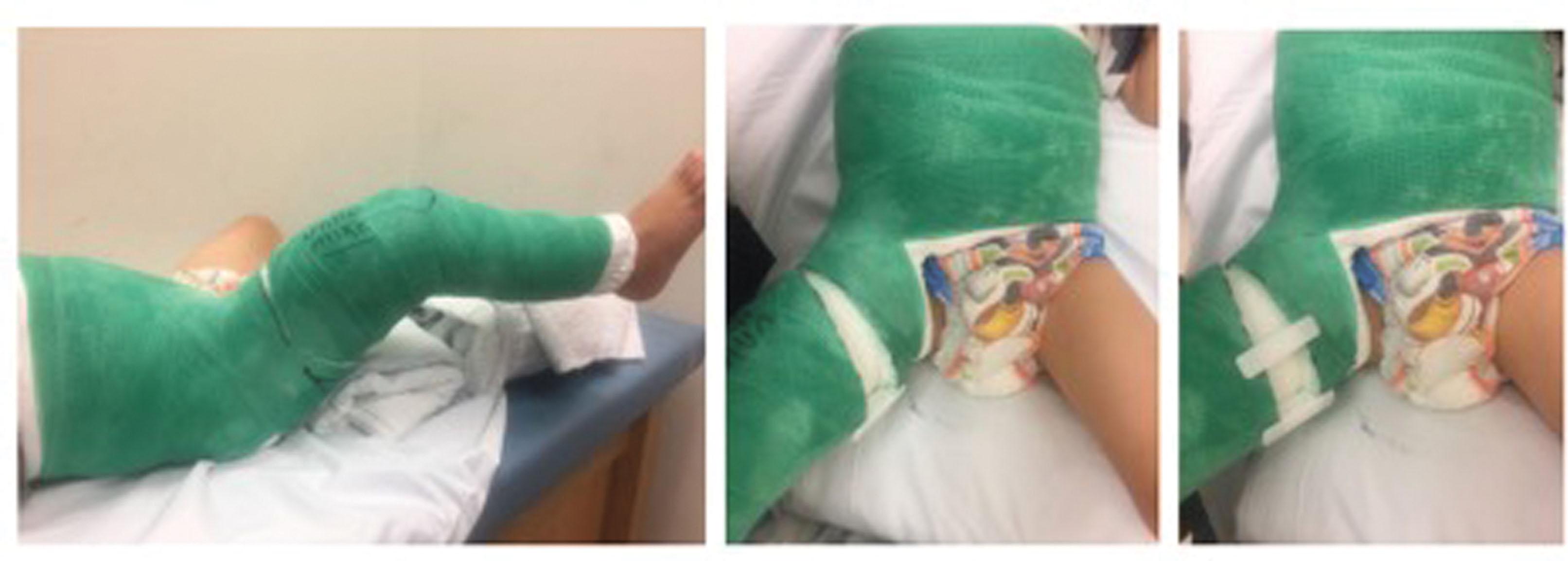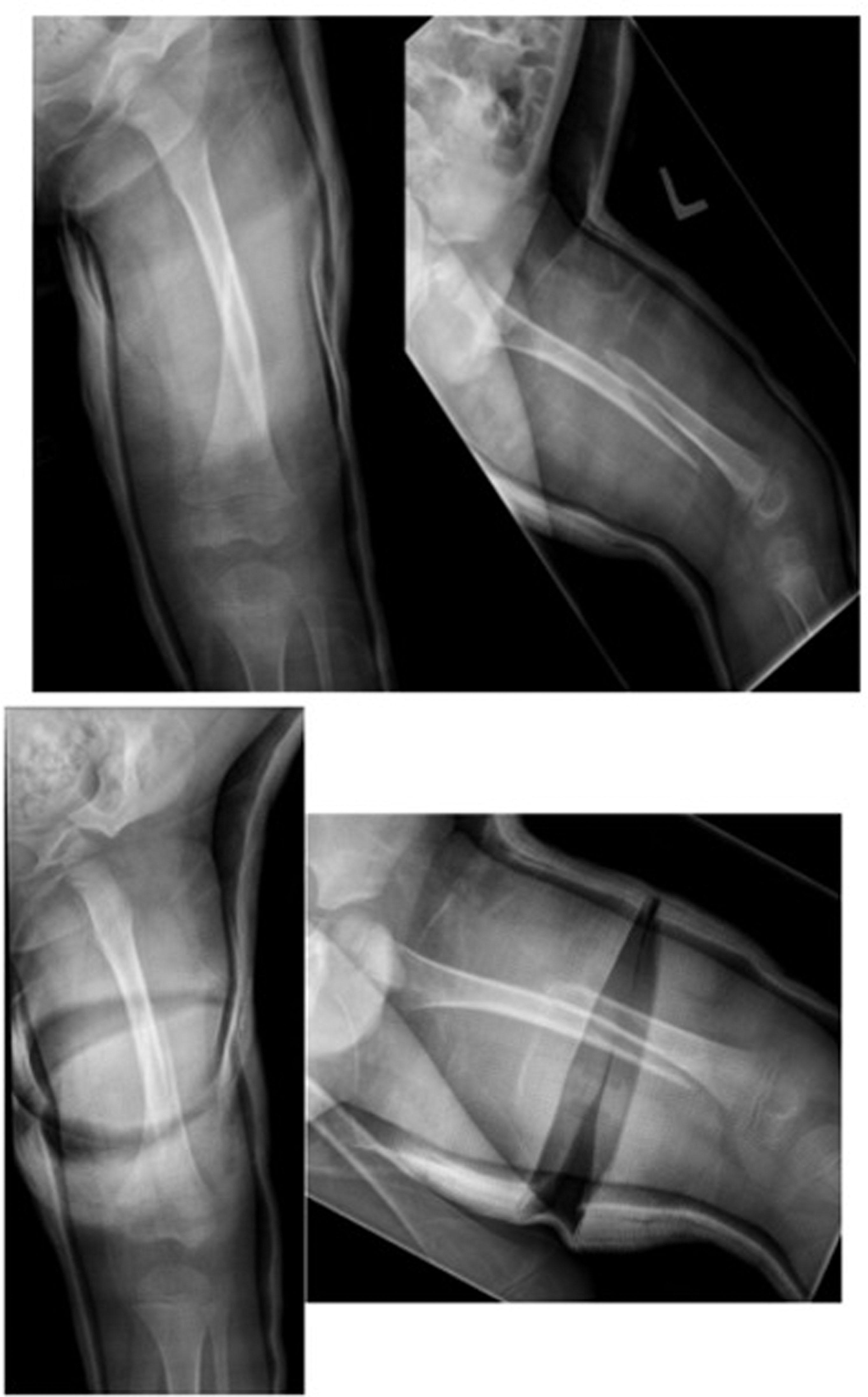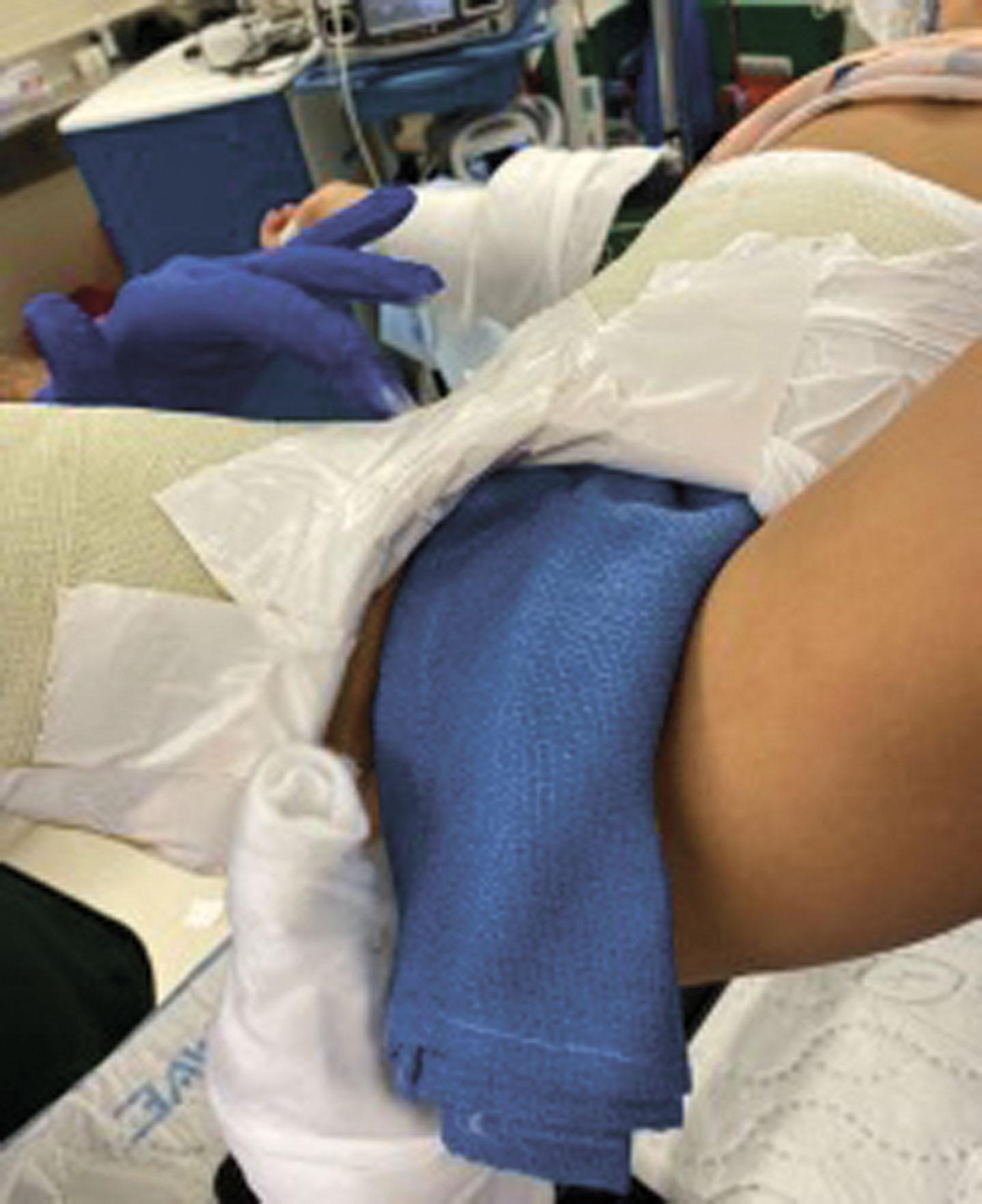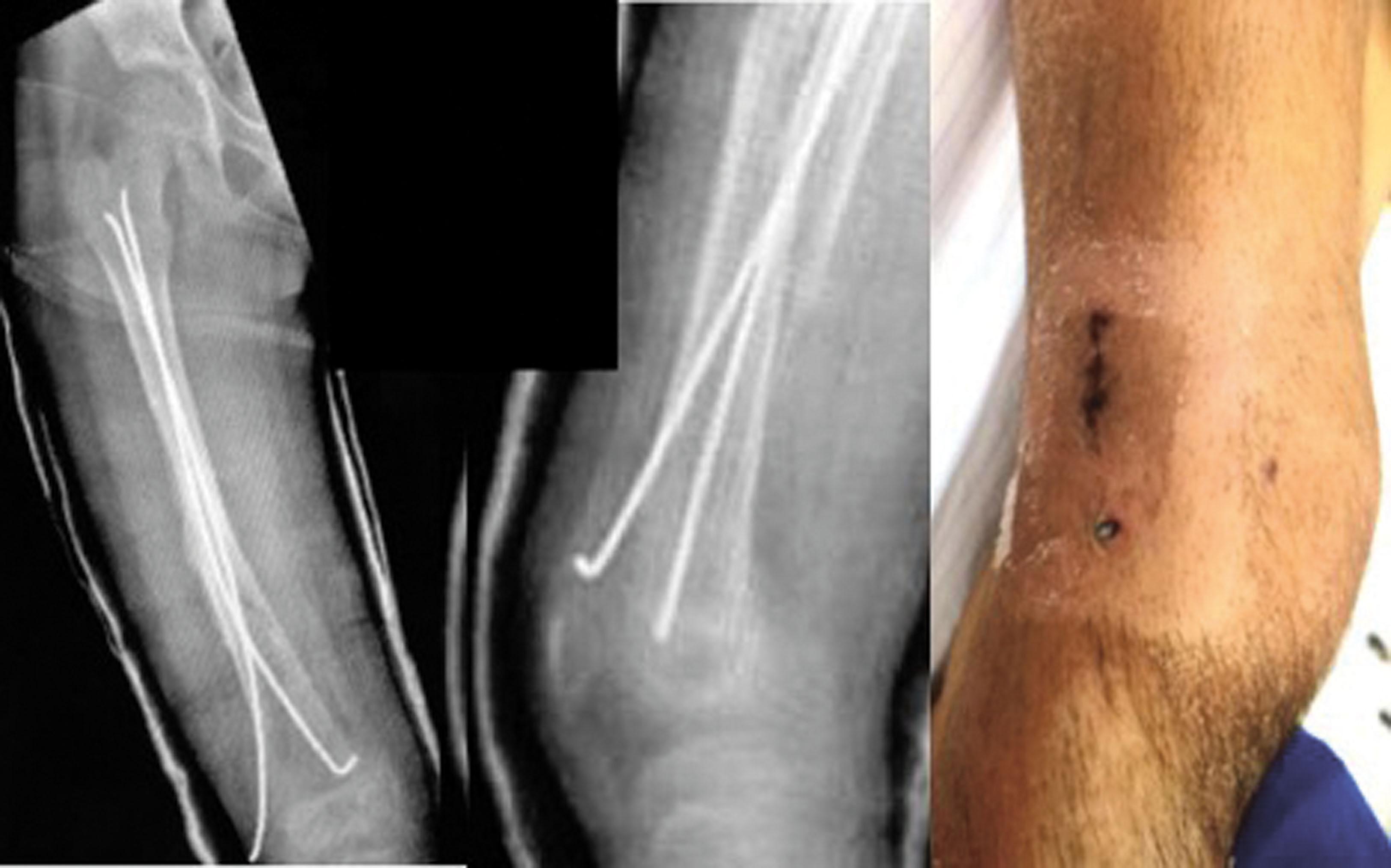Physical Address
304 North Cardinal St.
Dorchester Center, MA 02124
Diaphyseal femur fractures are one of the most common orthopedic injuries requiring hospitalization in children and account for 2% of all bony injuries. Historically, femoral shaft fractures were managed nonoperatively in children and young adults, typically with spica casting without or without traction. Nonoperative management remains the standard of care for children with stable fractures, using a Pavlik harness for infants less than 6 months old or spica casting for children 6 months to 5 years. Older children and adolescents with femoral shaft fractures are much more often managed with surgery. Literature points to reduced length of hospital stay, decreased burden for families, and decreased early disability with surgical treatment. There are numerous potential complications of both operative and nonoperative treatment of diaphyseal femur fractures.
Femoral shaft fractures are more common in males, who account for over 70% of injuries, and exhibit a bimodal age distribution. A peak among toddlers and young children, often from falls, is followed by another peak among older children and adolescents, often from higher-energy mechanisms such as motor vehicle accidents. Before walking age, up to 80% of femoral shaft fractures may be caused by nonaccidental trauma (NAT). Blakemore et al. reported that 65% of femoral fractures in infants less than 1 year were caused by abuse, compared to 35% in children ages 1 to 5 years. Up to 60% of NAT fractures are isolated injuries, with the femur and the humerus most commonly injured. Additionally, femoral shaft fractures can be pathologic related to neoplasms, metabolic bone disease, or osteopenic bone in children with neuromuscular diseases or osteogenesis imperfecta.
The treatment of femoral shaft fractures in children, adolescents, and young adults depends on multiple considerations, including weight, fracture pattern and stability, mechanism, associated injuries, surgeon preference, and socioeconomic concerns. Guidance on the management of pediatric femoral shaft fractures has predominantly stratified treatments based on patient age, weight, and fracture pattern. This chapter focuses on the common treatments and their complications, with a focus on the rates, diagnosis, management, and avoidance of these potential complications. Spica casting, flexible intramedullary nails, submuscular or open plating, intramedullary nailing, and external fixation will be discussed.
Pediatric femoral shaft fractures can often heal nonoperatively without long-term sequelae among young children with excellent remodeling potential. However, according to the American Academy of Orthopedic Surgeons’ monograph Managing Orthopaedic Malpractice Risk , “[t]he closed treatment of children’s (femur) fractures resulted in the most frequent and expensive complications, including foot drop, skin loss, compartment syndrome, and malrotation/shortening.” It is therefore critical to recognize and prevent potential pitfalls in closed fracture management.
Early spica casting is indicated in children ages 1 to 5 years with an isolated, low-energy femoral shaft fracture without soft tissue injury living in a reliable home environment. Proper set-up and at least one skilled assistant are critical to success. It is important to gather all the necessary supplies and ensure adequate imaging can be obtained prior to beginning with the cast. Adhering to accepted indications for spica casting and maintaining attention to detail during cast application are key to a good result. Our institution uses a stack of operating room (OR) towels placed between the patient’s abdomen/chest and the cast to ensure adequate room for respiration. We use GoreTex spica cast liners (AquaCast) directly on the skin, as well as waterproof tape to line the outside of the cast. For femoral shaft fractures, a one-and-a-half spica cast is preferred. Alternatively, there is certainly literature to support use of single-leg spica casts for appropriate fracture patterns. For a typical midshaft femoral fracture, the hip and knee are positioned in about 20 degrees of flexion, with the hip in about 20 degrees of abduction and 15 degrees of external rotation. Proximal third shaft fractures typically require more hip flexion. Most fractures tend to angulate into varus, so a valgus mold should be applied, aiming for about 5 to 10 degrees of valgus.
Although the incidence of compartment syndrome has not been clearly documented in the literature, there are numerous case series and case reports on this complication in closed treatment of femur fractures. Although compartment monitoring devices have changed the landscape of diagnosing compartment syndrome, this remains a clinical diagnosis particularly in young children. The “5Ps” of compartment syndrome (pain, paresthesias, paralysis, pallor, and pulselessness) were noted by Bae et al. to be frequently unreliable in children. Noonan et al. recommend instead the “3As” of pediatric compartment syndrome–increasing anxiety, agitation, and analgesic requirement.
Compartment syndrome among femoral shaft fractures was reported when reduction and immobilization involved placement of a short-leg cast, manual traction on the femur pulled through the short-leg cast, and spica casting with the hip and knee flexed to 90 degrees. This casting technique is no longer recommended; casts should be applied in one piece, with less hip and knee flexion, and excluding the foot to avoid this complication. If unacceptable shortening remains, then move on to more invasive surgical stabilization. If compartment syndrome is suspected after spica casting, the cast should be immediately bivalved, removed if symptoms fail to resolve, and then followed by appropriate fasciotomies.
Loss of reduction with angulation or malrotation is one of the most common complications of spica casting because one in five children placed in an early spica cast will require a change in treatment. Fluoroscopy should be utilized intraoperatively. Up to 10 degrees of coronal plane angulation (with a preference for valgus over varus), 20 degrees of procurvatum, or 10 degrees of recurvatum are acceptable at the time of casting. A fracture that heals within these parameters will predictably remodel.
Unacceptable angulation can often be corrected with cast wedging within the first 2 weeks of the injury. This is especially true when using single-leg spica casts. Wedging is performed by cutting nearly circumferentially for 300 degrees out of 360 degrees of the cast at the level of deformity, leaving the cast intact only at the apex of the deformity. A cast spreader opens the cut aspect of the cast to correct the deformity, and this position is then held in place with plastic spacers in the open area. The cast is subsequently overwrapped with fiberglass at the wedged site ( Figs. 11.1 and 11.2 ). Care must be taken so that the wedges do not encroach upon the underlying skin. Unacceptable rotation can also be corrected by circumferential cuts in the cast, manual correction of rotation confirmed on imaging, and subsequent overwrapping of the cast in that position. If cast wedging fails, the entire cast can be changed, or a more invasive treatment strategy should be carried out.


One study reported that up to 28% of patients placed in spica casts had a skin complication, of which 31% necessitated a cast change in the OR, 44% required early bivalving and lining, and 25% required cast trimming or local skin care. Predictors of skin complications included child abuse, younger age, and more than 40 days of casting. Urine and feces becoming trapped under the cast in the perineal area can lead to skin rashes. Occasionally this necessitates return to the OR for a cast replacement.
First, we recommend the use of GoreTex lining, such as AquaCast, beneath the spica cast, providing one waterproof layer between the cast and skin. Decubitus ulcers can also form in pressure points around the cast, necessitating extra cast padding about bony prominences or molds in the fiberglass. Waterproof liners can still tear around the edges of the cast, so we also recommend padding the perineal edges with moleskin to reduce sharp edges, followed by waterproof tape ( Fig. 11.3 ). Also, encouraging parents to turn the child from side to side in the spica can minimize pressure points. Oftentimes small adjustments to the cast such as padding or trimming can be performed once sharp, painful areas or pressure points are discovered, to salvage a cast without cast replacement.

Cast saw use for removal can cause burns or abrasions to already sensitive skin beneath spica casts. Shore et al. reported that cast-saw injuries occur at a rate of 1.23 per 1000 (0.12%) cast removals in a large pediatric institution. The blade of the cast saw becomes very hot, particularly where there are thick layers of fiberglass around the hip. Plastic protective cutting sticks can be placed underneath the cast in line with a planned cut. Cast saw burns can be often left alone or managed with local wound care.
Shortening typically occurs at the time of casting or soon after due to fracture instability. Up to 2 cm of shortening is acceptable, but 1 cm is considered preferable. The orthopedist can perform the telescope test. If the fracture shortens more than 3 cm with axial load on the affected extremity, it has a high likelihood of shortening if the cast was applied without a period of traction. Shortening is reported to be less likely if the hip and knee are flexed to 90 degrees; however, keep in mind that this type of casting is associated with compartment syndrome.
A certain amount of overgrowth occurs in nearly all femoral shaft fractures after healing, particularly among children ages 2 to 4 years treated with closed management.
A more recent study has shown that overgrowth is a natural consequence of femoral shaft fractures, is difficult to avoid, and develops independent of age, level of fracture, or position of fracture at the time of healing. Leg lengths should be monitored closely after a fracture with bilateral lower extremity scanograms. Hariga et al. noted that most overgrowth occurs in the first 18 months after fracture and that overgrowth tends to stop after 3 years and 6 months in almost 85% of patients. The authors noted that the leg length discrepancy typically remains unchanged until the end of growth; this study also noted that an average of 4.9 years after fracture is a good representation of the final leg length discrepancy at skeletal maturity. Leg length discrepancies of less than 2 cm are well tolerated by most patients with or without a shoe lift, but larger discrepancies may benefit from growth modulation or shortening or lengthening procedures later in life.
Superior mesenteric artery (SMA) syndrome, also called cast syndrome in this context, is defined by gastric dilatation with partial or complete obstruction of the duodenum. With excessive lumbar lordosis in the cast, the duodenum becomes compressed between the SMA anteriorly and the aorta and spinal column posteriorly. This is usually recognized within a few days from casting, but it can reportedly develop over several weeks. Symptoms include abdominal pain, vomiting, nausea, early satiety, and anorexia. Imaging such as upper gastrointestinal (GI) x-rays or computed tomography (CT) can help identify this rare syndrome.
Adequate space between the chest and abdomen and the cast is needed. An entire pack of folded OR towels placed between the patient and the cast when it is applied provides the space needed to accommodate respiration and GI function. The cast should seem very loose around the abdomen prior to wake-up from anesthesia and assessed in the 24 hours after to ensure adequate spacing. Use of a flat spica cast table can prevent excessive lordosis in the cast. Cast removal is warranted for SMA, and gastroenterology should be consulted for nonoperative management; laparotomy is rarely required.
Flexible nails are a mainstay of treatment for stable pediatric femur fractures in older children. Flexible nailing allows for earlier mobilization and also minimizes the psychological impact of prolonged casting. Flexible nails act as opposing intramedullary splints to stabilize a fracture. Because they do not provide rigid fixation, they are indicated for length-stable fractures, including transverse or short oblique femoral shaft fractures. The ideal application is in the skeletally immature child 5 to 11 years of age weighing less than 50 kg, for transverse fractures of the middle 60% of the femoral diaphysis. Flexible nails can be placed in a retrograde fashion, with a starting point roughly 2.5 cm proximal to the distal femoral physis, as well as antegrade from the greater trochanter if needed for additional stability. Nails are usually prebent prior to insertion, with the apex at the fracture site. The fracture is reduced, and the nails are subsequently passed through the reduced fracture site ( Fig. 11.4 ).

Become a Clinical Tree membership for Full access and enjoy Unlimited articles
If you are a member. Log in here